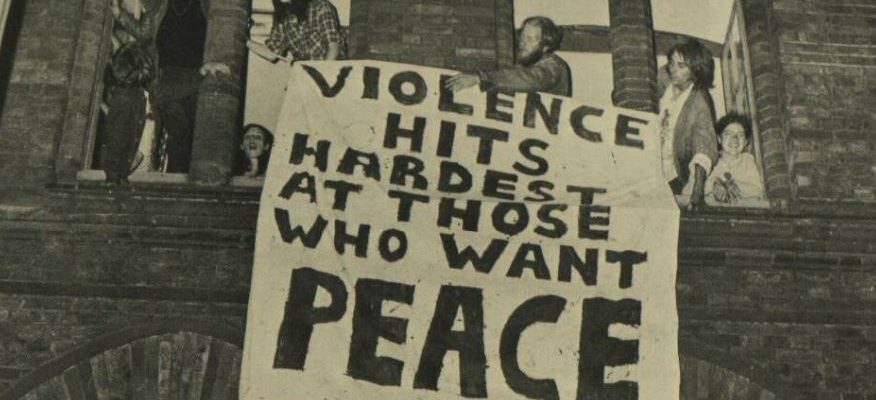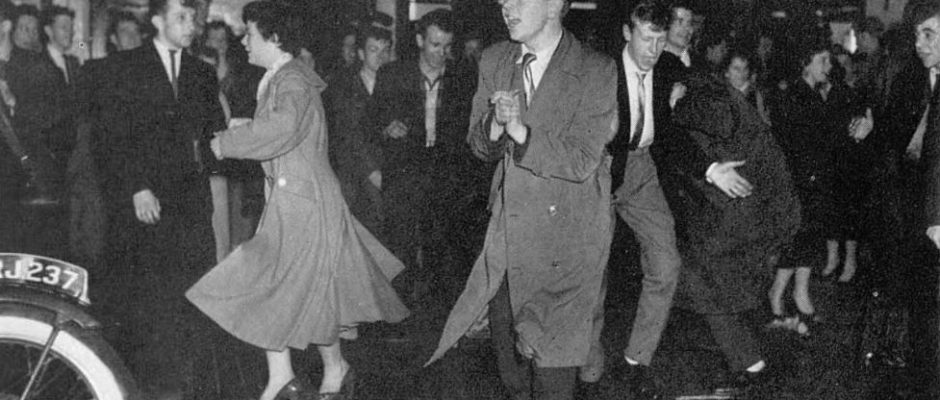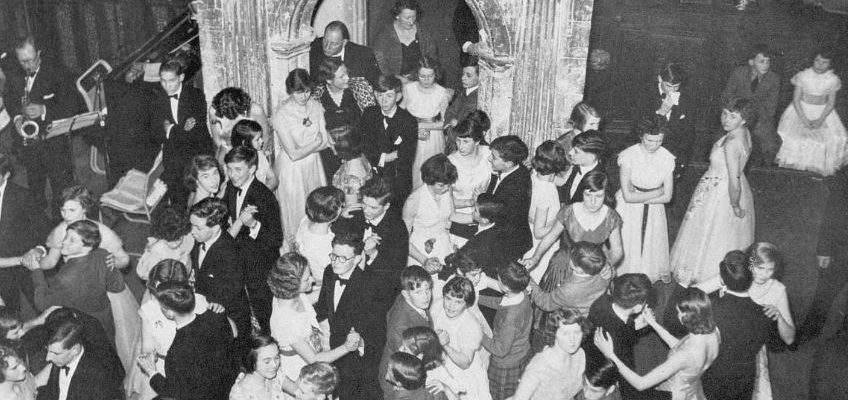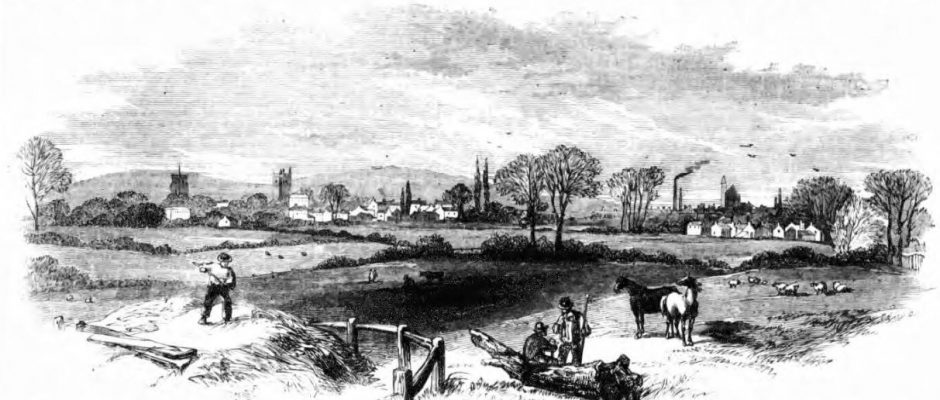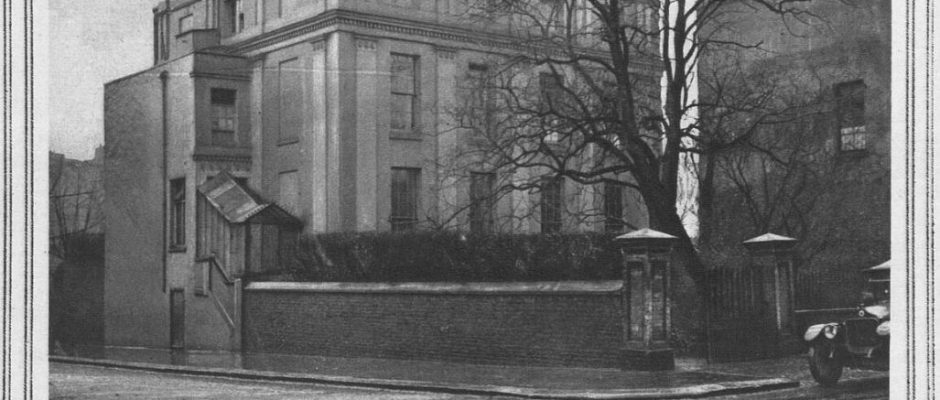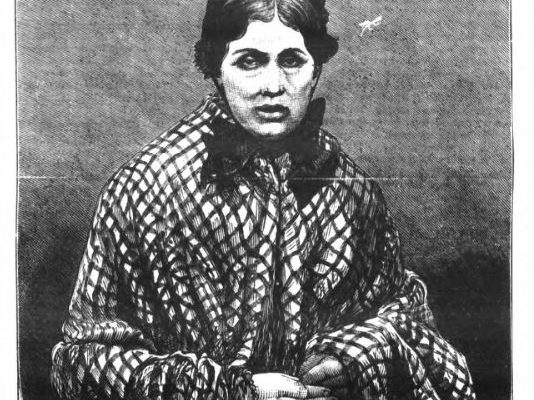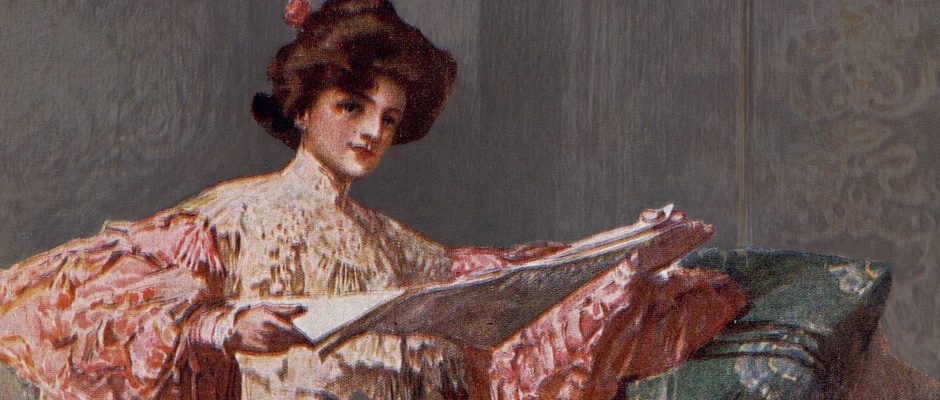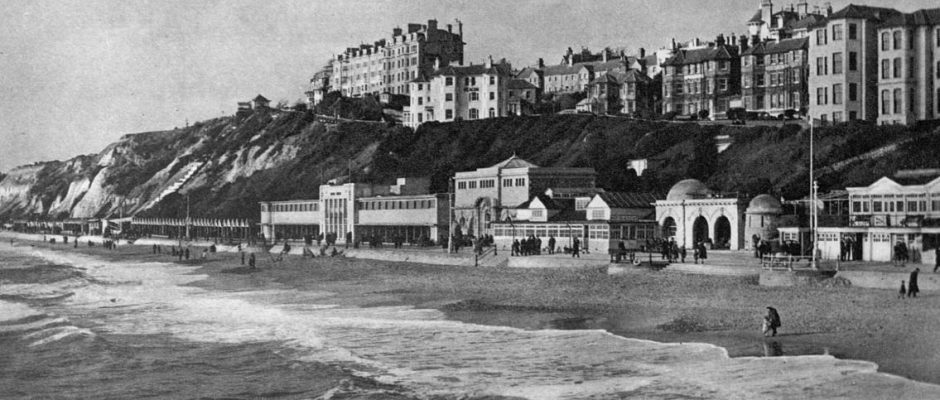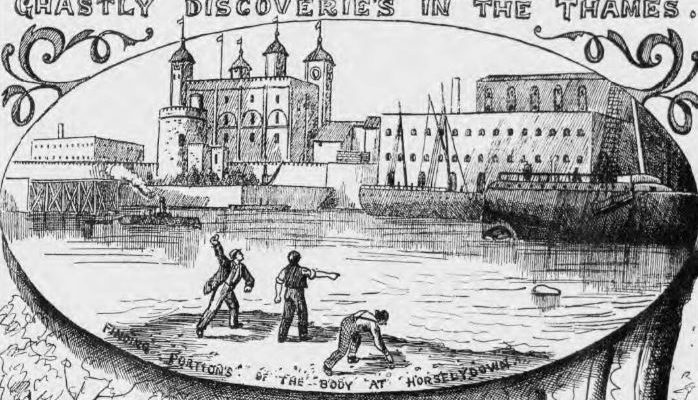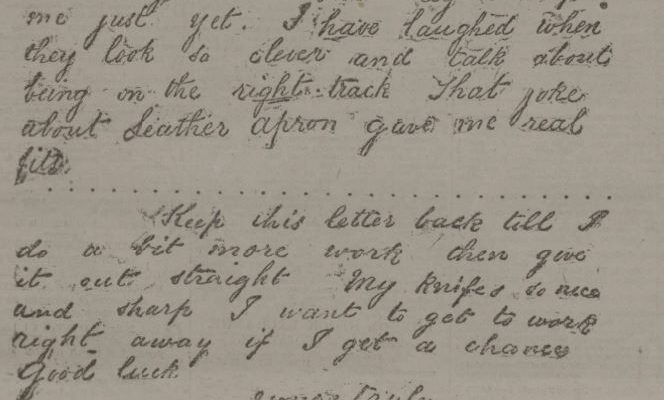In September 1969, 144 Piccadilly, a mansion in London’s fashionable West End, was taken over by a group of hippies who called themselves the London Street Commune. Over several days, the hippies barricaded themselves in the mansion, and resisted attempts to remove them, in what became known as the Battle of Piccadilly. Hippies occupy Endell Street School, Holborn | Illustrated London News | 4 October 1969 In this special blog, we look at how the newspapers of the time reported on this …
Headlines from History
‘…coloured velvet collars and cuffs, trousers that were so tight they couldn’t sit down in them, belts on the back of their jackets, long narrow ties like bootlaces,’ this is of course the style of the Teddy Boys, the British youth subculture which defined the 1950s, as described in the Londonderry Sentinel. The Sphere | 22 September 1956 The Teddy Boys, embracing the Edwardian style of decades before, were a threat to the status quo in a way that Britain had never quite …
Tags
‘Neither fish, fowl nor good red herring – that feeling of being betwixt and between.’ This is how hairdresser Mr Alexi describes the experience of being a teenager in a 1954 edition of The Tatler magazine. A teenage dance in Dorset | The Tatler | 6 February 1957 In 1954, the word ‘teenager’ was a relatively new addition to the lexicon. Although it first appeared prior to the Second World War, it only really caught on in common usage during the late 1940s. And by …
Tags
‘No more thrilling a tale of guilt and crime, and scarcely one so eloquent in its lessons and cautions to those who are in danger of entering upon a life of unbridled passion, is to be found in all the history of poor humanity than this story of William Palmer.’ So reads an article in the Sheffield Independent, 17 September 1888, regarding one William Palmer, better known as the Rugeley Poisoner. William Palmer, a former doctor, was convicted in 1856 for the murder …
Tags
In 1919 the country was shocked by a high society murder – dubbed the ‘West End Tragedy.’ Major Miles Seton, of the Australian Medical Corps, was shot and killed by Lieutenant-Colonel Norman Rutherford, a British army doctor, in the palatial surrounds of a Holland Park address. Using articles and photographs from the pages of the British Newspaper Archive, we explore this sad crime, which took place just a few months after the end of the First World War. Want to learn …
Tags
40-year-old Mary Ann Cotton was arrested in West Auckland, County Durham, in 1872 after her stepson, Charles Edward Cotton, was found to have been poisoned by arsenic. During the nineteenth century, arsenic was readily available and could be bought, unregulated, from most grocers. In this special blog, using pages from the British Newspaper Archive, we explore the crimes of Mary Ann Cotton, and how arsenic played a deadly role in everyday life. Want to learn more? Register now and …
Tags
This week on The Archive we have added 20,428 brand new pages, encompassing seven new titles, which cover England and Wales, as well as a brand new title from Jamaica, a first for the British Newspaper Archive. Register now and explore the Archive We have three new titles joining us this week from Yorkshire, strengthening our collection of newspapers from England’s largest county. We have two new titles from the West Yorkshire town of Batley, including the Batley Reporter and Guardian, which was a weekly title, and the Batley News. This latter title was also published on …
Tags
In March 1935 the seaside resort town of Bournemouth was shaken by a sensational murder. Retired architect Francis Mawson Rattenbury, aged 67, was found dead at his home, Villa Madeira, on Manor Road. Accused of his murder were his younger wife Alma Rattenbury, and her lover, 18-year-old gardener George Stoner. This case would end in further tragedy, and in this special blog, using pages from the British Newspaper Archive, we explore how murder came to the genteel town of Bournemouth …
Tags
Pages from the British Newspaper Archive abound with reports of crimes and their perpetrators, and some of the most intriguing of these are the UK’s unsolved murder cases, where a verdict of ‘murder by person or persons unknown’ has been reached. In this special blog, we explore five of the most notorious unsolved murders from UK history, ranging from the Thames mystery of the late 1880s, which came to be overshadowed by the Jack the Ripper killings, to the strange …
Tags
On 27 September 1888, in the midst of a series of horrific murders in Whitechapel, the Central News Office in London received a letter, signed by ‘Jack the Ripper’. Known as the ‘Dear Boss’ letter because of the way it was addressed, the letter changed the way British newspapers reported the Ripper murders. Read newspapers from 1888 Facsimiles of the ‘Dear Boss’ letter in the newspapers The name ‘Jack the Ripper’ reached the British press and general public on …


